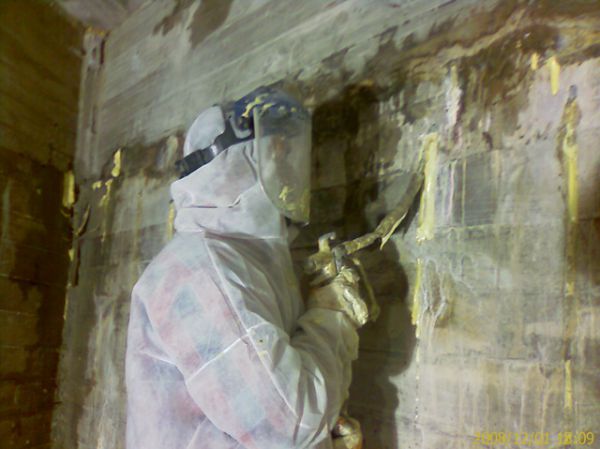WHY INJECTION?
APPLICATION AGAINST NEGATIVE WATER PRESSURE IN EARTH CONTACTING STRUCTURES
For structures to endure a long life, the main iron reinforcements that bear the structures should be protected against exterior effects (water, humidity, heat differences). In the event they are not protected, bearing reinforcements suffer corrosion (rust) and lose their strength values which leads to reduced rupture/crushing values against movements such as earthquake etc. natural disasters and similar events, becoming unfit for bearing the structures.
Therefore, the water insulation to be done within structures –especially the insulation on sections in contact with the ground– should not be done by transferring water from one location to another within the building or building walls (drainage) but to completely cut the building’s contact with the water. Because injection is an application that infuses into the concrete structure and it fills all small and larger gaps within concrete (including gaps between reinforcements and concrete), it prevents the reinforcements to be corroded and the building’s useful life to be shortened due to water problems. Furthermore, it prevents the typically encountered (especially at ground floors) problem of the building vertically attracting the moisture within the ground via capillarity, for the contact of the structure’s wall and floor sections with the ground is cut.
INJECTION APPLICATION SYSTEM
Highly reactive, single-component polyurethane injection for cutting water and filling cracks
Areas of Use
- For cutting water flow coming from negative direction at exposed concrete volumes in contact with the ground
- Injection applications conducted on faces of tunnels
- Rock stabilisation
- On concrete or rock surfaces,
- Water tanks
- Swimming pools
- Elevator shafts
- Sewer water treatment systems
- Pier or wharf walls
- Structure foundations
Suitable for use in filling and coating applications on cracks and gaps that may form in mines, and against potential leaks after sealing at pipe canal junction points.
INJECTION PRODUCTION PROCESS STAGES
A) SURFACE PREPARATION APPLICATION:
Crushing, Removing, Repairing
B) INJECTION:
Polyurethane injection and cement injection done at unreachable sections
C) WATER INSULATION APPLICATION:
Final layer water insulation application
SURFACE PREPARATION PROCESSES BEFORE AND AFTER INJECTION APPLICATION.
Surface preparation works are divided into two general groups, namely crushing and repairing. In surface preparation processes, the general principle is to have the surface turned suitable for work, in other words make entire concrete surface suitable for the structural chemicals to be used and homogenously strong at all points.
In crushing application, plaster, concrete etc. surfaces that soaked up water from the ground in a long time period and therefore became fragile are crushed via suitable mechanical methods. During this crushing process, if these surfaces are exposed concrete and have weaknesses on them, the weak plaster layer is crushed. In case these surfaces are brick, briquette etc. masonry structures, the weak plasters are crushed until these layers are reached.
After the crushing processes are completed, these surfaces are coated with watertight (stopping or minimising capillary effects) products that are resistant to sulphate and similar chemicals conveyed through underground waters. At corner bend etc. critical sections, crushing is done somewhat more sensitively and deeper than the crushing of other sections, and these sections are yet again repaired.
On the surfaces, an ensuring last layer of water insulation smear is applied that is elastic, single-component, resistant to negative water pressure and capable of forming one film layer thickness.
Surface preparation works should not be applied locally. Instead they should be applied at larger surface areas without being limited to only surfaces with obvious problems. The scope of this expansion should be determined by our company’s expert application technical personnel.

